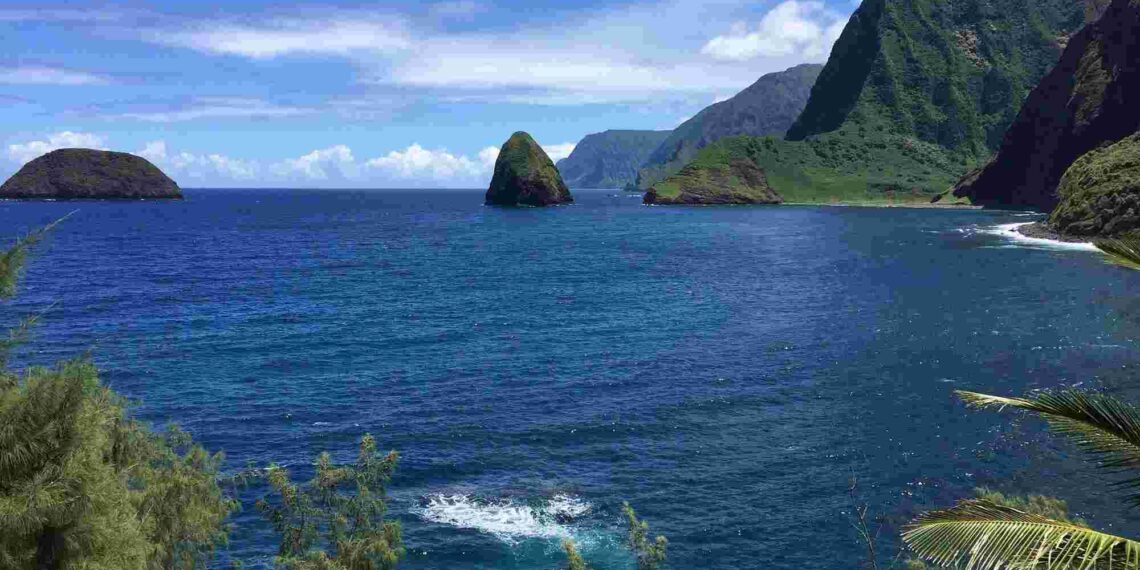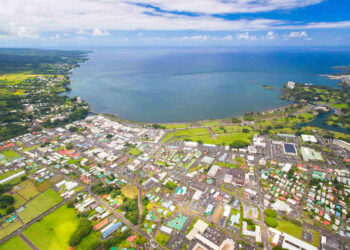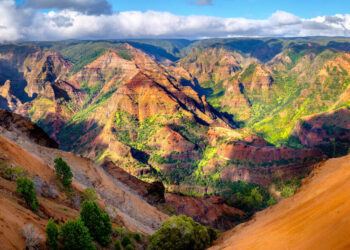Kalaupapa Peninsula, on Molokai’s north coast, is a 2.3-square-mile area surrounded by 2,000-foot cliffs and the Pacific Ocean. Part of Kalaupapa National Historical Park, it’s known for its history as a Hansen’s disease (leprosy) settlement and its isolated beauty. You can only visit by guided tour, via mule, small plane, or hiking trail. This guide covers Kalaupapa’s past, key places to see, and practical tips for the visitors.
History of Kalaupapa Peninsula
Kalaupapa was formed by Molokai’s volcanic activity. The island emerged millions of years ago from the East Molokai Volcano. A later eruption created the peninsula’s flat land, along with steep cliffs. “Kalaupapa” means “flat plain” in Hawaiian, describing its shape.
Before Western contact, Native Hawaiians fished and grew taro here. In 1865, the Kingdom of Hawaii chose Kalaupapa to isolate people with Hansen’s disease because of its remoteness. From 1866 to 1969, over 8,000 patients, mostly Native Hawaiians, were sent here, often forcibly. They faced tough conditions but formed a community with homes, churches, and gardens. Father Damien, a Belgian priest, arrived in 1873 to help and became known worldwide for his work. He died of the disease in 1889. Mother Marianne Cope, a nun, also served patients for decades.
In 1969, isolation ended after treatments were developed. A few former patients still live here privately. The National Park Service, which runs the park since 1980, preserves the history and respects the community. Strict rules limit access to protect residents and sacred sites.
Things to Do and See
Kalaupapa Guided Tour
The only way to visit Kalaupapa is on a guided tour with Damien Tours, run by a resident descendant. Tours last about 4 hours and use a bus to visit main sites, including the settlement and historic buildings. Guides explain the patients’ lives and the peninsula’s history. Groups are small, and visitors must be 16 or older. Reservations are required well in advance.
St. Damien Church
In the main settlement, St. Damien Church, built in 1876, is a key tour stop. Father Damien held services in this wooden church, painted white with a small steeple. It’s simple, with plain pews and an altar. Residents still use it. You can take photos outside but not inside.
St. Philomena Church
The tour visits St. Philomena Church in Kalawao, built in 1872. Father Damien added features like floor holes for patients’ comfort. The stone building faces the ocean, surrounded by grass and trees. It’s a quiet spot showing the settlement’s early days. Stay with the guide to respect the site.
Kalaupapa Lookout (Tops Molokai)
Outside the peninsula, Kalaupapa Lookout in Pala‘au State Park, 10 miles away, gives a view of the peninsula from a height of 1,600 feet. A short trail leads to the lookout, with signs about the area’s history. It’s the only way to see Kalaupapa without entering the restricted zone. Bring binoculars for a better view.
Phallic Rock
Near the lookout in Pala‘au State Park, Phallic Rock is a stone formation tied to Hawaiian fertility stories. A 0.2-mile trail through trees reaches it. Signs explain its cultural role, but it’s sacred, so don’t touch or climb it. It’s a quick stop to learn about local traditions.
Kalawao Settlement
The tour includes Kalawao, the first settlement on the peninsula’s east side. It has old hospital buildings, a pier, and St. Philomena Church. The area is greener, with cliff waterfalls visible. Guides describe early patient life and point out farm remnants. Follow the guide’s path to respect the area.
Kalaupapa Settlement
The main settlement, where tours begin, includes homes, a store, a post office, and St. Damien Church. A few former patients and park staff live here. The tour shows the community’s layout, with gravel roads and lawns. A small museum, open only during tours, has photos and artifacts. Respect residents’ privacy by staying with the group.
Siloama Church
In the settlement, Siloama Church, built in 1871, served Protestant patients. The small, white building has a basic design and a nearby cemetery. The tour stops here to share its role in community life. It’s still used, so follow the guide’s instructions.
Practical Tips for Visiting
Kalaupapa is hard to reach and strictly controlled. You must join a guided tour, accessed by mule ride, small plane, or a 3.5-mile hiking trail. The trail drops 1,700 feet and takes 1-2 hours each way. Mule rides and hikes start early morning; book through Damien Tours or Kalaupapa Rare Adventures. Planes fly from Ho‘olehua or Honolulu. No visitors under 16 are allowed, and tours skip Sundays and major holidays.
Molokai gets 40-60 inches of rain yearly. March to October is drier, but pack a rain jacket. Temperatures range from 70-80°F. Wear sturdy shoes for hiking or mule rides, and bring water, snacks, and sunscreen. There are no restrooms or shops in Kalaupapa, so use facilities at Tops Molokai first.
Book tours 4-6 weeks ahead, as daily visitors are limited. You can’t stay overnight or explore outside the tour. Photography has restrictions. Don’t approach residents or their homes. On Molokai, rent a car in Ho‘olehua to reach the trailhead or lookout. Gas up in Kaunakakai, 20 miles away. Stay in Kaunakakai for lodging. Check tour status for weather or rule changes. Respect sacred sites and wildlife, like monk seals on the coast.
Conclusion
Kalaupapa Peninsula is a place of both history and calm in Hawaii. The guided tour covers St. Damien Church, Kalawao, and the settlement, sharing the story of Hansen’s disease patients and their community. Visiting requires planning which includes booking early, picking your access, and following certain rules. Kalaupapa isn’t for casual tourists but it’s a chance to understand a serious chapter of Hawaii’s past.











